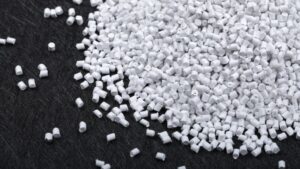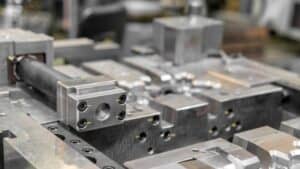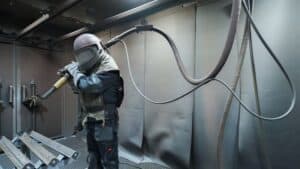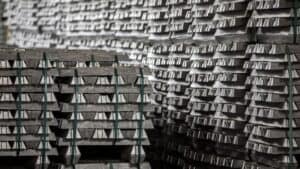With the rise of art and culture, the art and culture industry has also developed and grown. Various art galleries, museums and related art institutions have opened art stores to sell art derivatives.
Art derivatives are a way of popularizing art, which not only has the individuality of the artwork itself, but also conforms to the common attributes of mass consumer goods.
This dual characteristic brings certain difficulties to the design of art derivatives.
How to reduce costs and realize the commonality of comprehensive art individuation and mass commodities is the key consideration of current art derivatives.
However, the current mechanized production is mainly mass production and popularization, and it is difficult to meet the individual needs of art derivatives, and the emergence of 3D printing technology is precisely adapted to this demand.
1. The impact of 3D printing technology on art design itself
(1) Impact on clothing design and luxury design
With the rapid development of 3D printing technology, its printing technology has also improved.
Not only can it be used in the traditional industrial manufacturing and medical fields, but it is also closely related to people’s daily life. It is more intuitively presented in the public’s field of vision, giving people the opportunity to witness the image of the combination of technology and art.
From the analysis of clothing design, traditional designers not only need to draw sketches, but also need to consider what kind of fabric to choose and how to cut.
From the design conception of the sketch to the display of the finished product, it needs to go through a more complicated process. If the designer accidentally cuts and makes a mistake and enters the model design link, it will have an adverse effect on the designer and the design company.
With the rapid development of technology, fashion designers can present their own designs on fashion shows through the medium.
3D printers are an important medium that can help designers realize this dream. Designers only need to create sketch models of their own designs on 3D software, eliminating the need for traditional complex processes, thereby reducing the incidence of errors.
Designers can flexibly adjust their design components during the creation of the model, and the operation process is relatively simple and convenient, and no additional costs will be added.
The designer can print the debugged model as a sample, so as to find the error in time. In this way, a series of problems caused by cutting errors can be effectively avoided, and the designer can also see his design in the first time s work.
The application of 3D printing technology to the design of luxury goods plays an even more important role. The tiny details in the design can be completed by a 3D printer, and it will not take a long time. It can be said that as long as it is designed by a designer, a 3D printer can complete it. .
The luxury model printed by a 3D printer can show the subtle parts of the product. Whether it is tactile or visual, it is stronger than traditional hand-made, with extremely high accuracy.
(2) The impact of 3D printing technology on film animation and hand-run production
With the improvement of people’s living standards, the ways of mass consumption and entertainment have become more colorful.
Although it enriches people’s lifestyles, they are also prone to aesthetic fatigue.
As a result, in order to gain attention and increase box office revenue, film and television manufacturing companies have adopted 3D effects to create scenes with magnificent colors, realistic pictures and magnificent scenes, which played a good publicity effect and provided viewers with a visual feast. , Thus satisfying consumers’ pursuit of individualization.
However, this kind of image will inevitably require a lot of manpower and financial investment, which adds a certain financial burden to the production company. How to reduce investment costs and increase profitability on the basis of achieving publicity effects has become a key consideration for 3D film and television animation companies, so some film and television animations try to incorporate 3D printing technology into film production.
For example, 3D printing technology is incorporated in the film and television animation of “The Manner Boy”. Many animal shapes and character expressions are made by 3D printers, and they have achieved good box office results.
By using 3D software to complete the creation of the character model, and then printing it by a 3D printer, the printed model has a delicate texture, which greatly saves the time required for character model setting and production, and improves work efficiency.
In addition, 3D printing technology can also be applied to the movement of games and animated characters.
First scan the key actions and key points of the physical objects of the moving character, then input the scanned data into the 3D software for sorting, and finally use a 3D printer to print it out, which not only retains the authenticity of the original actions, but also has a high degree of fluency .
2. The impact of 3D printing technology on other aspects of art derivatives
(1) Impact on design concepts
Art derivatives have particularities in commercial products. They are mainly built on the basis of industrialized mass production, which means that they are no different from traditional product designs and cannot reflect the differences of consumers.
In this context, as far as art derivative designers are concerned, they already have a design concept of mass production when designing art derivative products at the initial stage, which limits the designer’s design ideas.
For example, for sculpture derivatives, the conventional design model is to analyze the scale of the sculpture required by the consumer first, and then produce it. This increases a certain degree of sales risk, and this also limits the consumer’s choice of space. This model is no matter in art. For the producers or consumers of derivatives, there are certain restrictions.
The 3D printing technology can adjust the virtual three-dimensional model of derivatives according to the specific needs of consumers for size, which can be said to achieve “tailor-made”, which not only meets the needs of customers, but also reduces the design support costs of derivatives.
(2) Impact on the design process
When designing a product, you should fully consider the problems that may be encountered in the design process, and try to solve it in the early stage of the design to avoid repeated design, which increases the difficulty of the design and prolongs the design cycle.
Similarly, when designing art derivatives, only a relatively abstract two-dimensional plan can be used for discussion and design. 3D printing can realize the establishment of a three-dimensional conceptual model without factory equipment processing. The designer combines the conceptual solid model to modify it, so extremely Greatly improve design efficiency.
(3) Impact on detailed design
Due to the restrictive production process, the shape and structure of some of the current art derivatives are relatively simple, which affects the display of the exquisite and beautiful appearance of the artwork, and cannot fully display the aesthetic characteristics of the original artwork. This also leads to the low-end taste of the art derivative. The main reason for the manufacturing state is just to copy the two-dimensional pattern.
For example, printing a modern finished product on a two-dimensional graphic work.
The application of 3D printing promotes more refined design of derivatives.
3D printing technology forms a whole product through an “incremental” method, which has changed the traditional form of assembly of parts, and promoted the form of art derivatives to no longer be simpler, more complex and characteristic.
At the same time, 3D printing has a very high printing resolution, which effectively avoids problems in the printed product, and designs better details.
(4) Impact on product ecology
With the development of 3D printing technology, artists do not need to invite specialized art derivative designers and manufacturing companies to extract and design design elements in their works, construct virtual models, and use 3D printing equipment to complete the production of finished products. Will appreciate more innovative derivatives.
In addition, the current art derivatives are all led by designers themselves, and consumers are in a state of passive choice.
3D printing can transform mass production into small batch production, and this production mode is more personalized.
In this environment, consumers can also change from passive acceptance to participating designers, and everyone can bring their own ideas to reality.
In this way, the overall ecology of derivatives design will be more diversified, open and inclusive.
Concluding remarks:
To sum up, with the development and progress of science and technology, it has provided a broad space for the development of art design, and at the same time has a significant impact on the design and presentation mode of designers.
In particular, the birth of 3D printing technology can be said to have opened a new chapter for the design of art derivatives, subverted the traditional design and production mode, and improved the convenience of design.
Not only that, it reduces the use of human resources to a certain extent, saves costs and expenses, and also has good environmental performance.
From a macro level analysis, 3D printing technology has transformed the traditional product design and production model after the industrial revolution, changed the traditional design concept, design process, design details and ecology, and promoted the ecology of art derivatives to be more diversified, open and open. Inclusive, fully demonstrate the individual characteristics of art derivatives.






